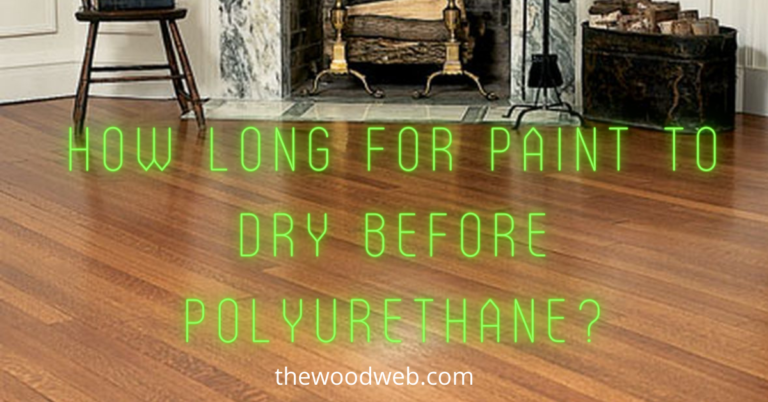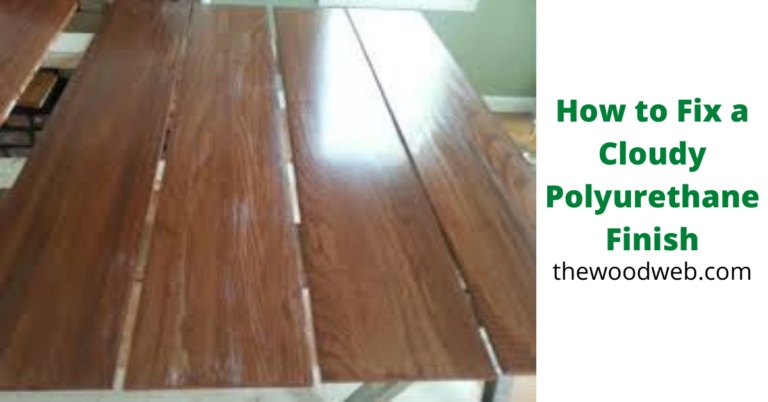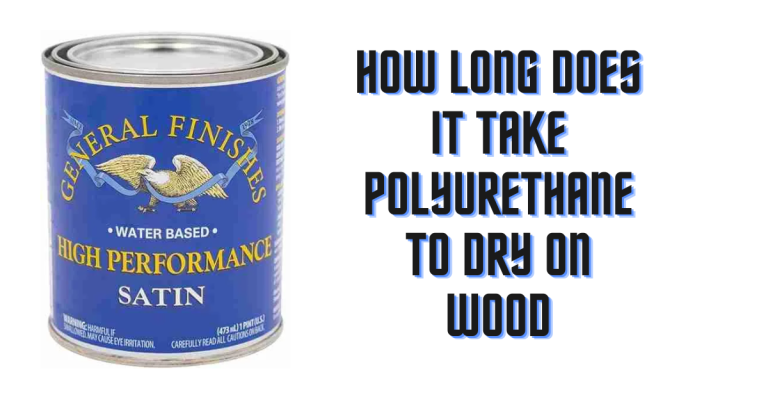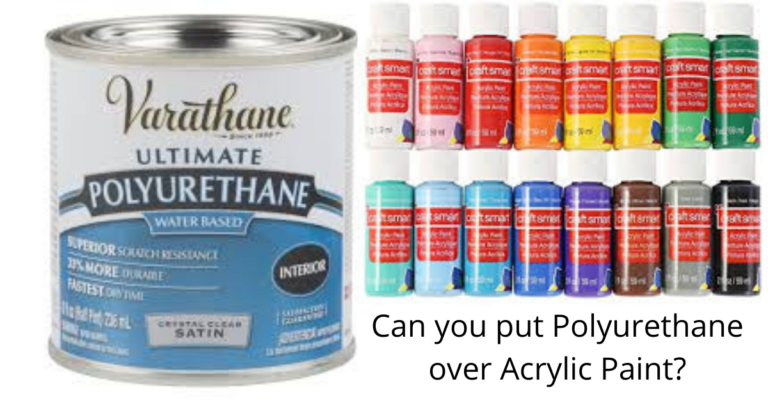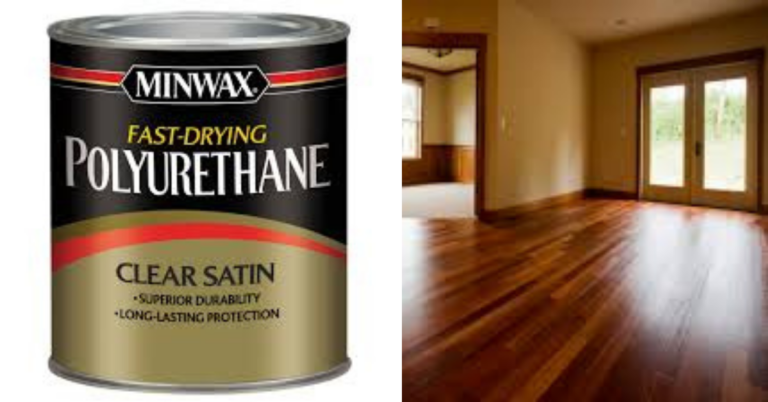Can You Put Polyurethane Over Painted Cabinets?
Polyurethane is one of the most critical sealants available, and one that you should consider having in the home. Applying polyurethane finish on woods, such as a painted piece of furniture or floorings has several advantages, like prolonging the wood’s lifespan, adding beauty to the wood texture, etc.
However, one common question people keep asking is, “can you put polyurethane over painted cabinets?” We’ll be looking forward to answering this question in this article.
Since you can apply polyurethane on several wood types, such as softwood and hardwood. After all, most cabinets are made of wood material. Therefore, Yes, you can apply polyurethane over painted cabinets.
But why is putting polyurethane over painted cabinet vital? Are there any advantages as there are disadvantages? Let’s find out more!
All at a Glance
Why Should You Apply Polyurethane Over Painted Cabinet?

Over time, woods undergo a different kind of wear and tear, which ultimately reduces their lifespans. When this happens, their aesthetic value is also lost, and once a beautiful piece of furniture becomes an eyesore.
This is where applying polyurethane comes in. Putting polyurethane finish over a painted cabinet will cut down on the wood’s wear and tear, which in turn, extends its lifespan – not to mention that polyurethane will preserve the wood’s aesthetic value.
Additionally, polyurethane is super easy to put on. It dries fast and to a much harder finish, which makes it harder to damage.
It’s resistant to chemicals and other solvent and creates a surface that’s conveniently easy to clean without damaging the cabinet.
Polyurethane comes available satin and gloss finishes. But what does polyurethane finish really do to preserve wood’s aesthetic value and minimize wear and tear?
When you apply polyurethane over a painted cabinet, you are sealing the wood in plastic. This plastic is so robust that hardly can anything penetrate it. Plus, it’s incredibly durable, so your wood cabinet stays fresh and wear-free for a long time.
The disadvantage of putting polyurethane over painted cabinets or surfaces is that you may find it complicated repainting the body unless you strip the surface entirely.
Read Also: Can You Put Polyurethane Over Acrylic Paint?
Should I polyurethane over Cabinet?
It can be pretty much confusion for most people as to when you have to put polyurethane over your painted cabinet. We have already discussed a few points, but we’ll elaborate on them further.
The following are instances where you need to put polyurethane over a painted cabinet.
If you see lots of scratches, stains, and chips on your painted cabinet, and you noticed that they’ve become more apparent since the last time you checked, it’s an indication of wear and tear. You need to apply a topcoat like polyurethane.
If you recently painted your cabinet with chalk or latex, it would help if you applied polyurethane to protect the finish.
Note that not all paints require a topcoat or sealer like polyurethane. Paints like Americana Decor Satin Enamels have some degree of sealing abilities, so you may not be needing to apply polyurethane over it after all.
However, that depends on the surface type and how long you last painted it. If the painted surface is a high-traffic area like tabletops, or in this case, cabinets, it would be best to put polyurethane to seal the paint.
Over time, scratches and stains may become apparent on the paint, and you wouldn’t want to take any chances of losing the aesthetic of the wood cabinet.
What Polyurethane Can You Apply Over Painted Cabinets?

Like we previously explained, you may not need to apply polyurethane over painted cabinet if you painted the cabinet with durable paint. In cases where less durable paint was used, using polyurethane topcoat is best.
However, you should know that not all paints are suited to polyurethane, meaning certain types of paints work best with polyurethane.
If you painted your cabinet with gloss latex or acrylic enamel, there wouldn’t be any need to use polyurethane topcoat because gloss latex and acrylic enamel are highly durable and resistant to wear.
However, if the cabinet is painted with low satin latex paint, or if it’s been long you last painted the cabinet, adding polyurethane will further protect it from stains and wear and elongate its lifespan.
Regarding the type of polyurethane to use on painted cabinets, you should use oil-based polyurethane rather than water-based polyurethane on cabinets painted with oil-based paint. If water-based polyurethane is used, it could lead to adhesion problems, which could result in cracking.
It would be best if you used water-based polyurethane on low-sheen flat or satin latex paint. Water-based also works great with eggshell paints and will prolong the lifespan of the paint.
How to Apply Polyurethane Over Painted Cabinets
Applying polyurethane over painted cabinet is somewhat easy if you have the right tools with you. It’s also time-consuming, as you’ve to allow each coat to dry completely before applying the next one.
Applying polyurethane will require the following tools;
- Oil-based or water-based polyurethane
- Applicators like brush, sponge, foam, lint-free cloth, or sprayer
- Sandpaper
Follow these simple steps;
Choose between an oil-based or water-based polyurethane. If you don’t want the coating result to turn amber, I advise that you stick to water-based polyurethane.
In coating with any polyurethane, you need to make sure certain elements or factors are available.
For instance, in working water-based polyurethane, you need to cover the air vents or ducts to reduce airflow because water-based polyurethane dries faster than oil-based polyurethane.
Comparatively, oil-based polyurethane requires better ventilation. However, you need to ensure that you don’t expose it to excess sunlight because it can flake.
Prepare the area to be coated. Clean the cabinet with a damp cloth or lint-free cloth thoroughly to get rid of any speck of dust. If you recently painted it, ensure it’s properly dried before you begin.
Sand the surface gently to remove any nail or sharp objects that may interfere with the coating. Sanding will make the polyurethane adhere smoother.
If there are holes in the cabinet, mix some glue and sawdust to fill the gaps. You need to ensure that they are scorched before moving to the next stage.
Polyurethane bubbles when shook, so it’s better you stir it with a paint stick. Shaking will create bubbles when you’re applying the polyurethane over a painted cabinet, which will prolong the drying time.
Some products require a brush-on, others require a spray-on, while others use wipes. Brush-on products tend to transform into a more robust-finished look, while wipe-on products and spray-on products create a softer look.
The advantage spray-on products have over others is that spraying can reach places where the other two can’t reach, especially brushing.
If you intend applying polyurethane via the brush method, use a bristle brush when working with oil-based polyurethane; when working with water-based polyurethane, use a synthetic brush.
Apply a coat of oil-based or water-based polyurethane. With oil-based polyurethane, you’ll need at least two coats, the first acting as a primer, and the other, as a finish coat. With water-based, we recommend you use up to four coats because the polyurethane dries more quickly.
After applying the first coat, allow it to dry adequately. Sand the cabinet carefully for a smoother surface before applying the next coat.
Not all polyurethane is clear. Some are colored and thick. If you want to reach the desired color tone on your kitchen cabinet, you’ll have to apply several coats.
What Other Topcoats Can You Apply Over Painted Cabinet?

Aside from using polyurethane, you can apply a varnish topcoat over painted cabinets. Varnish will protect your painted cabinets from wear and prolong its lifespan.
Like polyurethane, you don’t need to use a varnish topcoat if you used durable paint for the cabinet. Even if you have to use a varnish topcoat, it will be after several years.
High-sheen paints, such as acrylic enamel offer great protection against scratches and wear. On the other hand, low-sheen paints, such as satin latex doesn’t go down well with cabinets because they are susceptible to wear and doesn’t offer any resistance to stain.
Moreover, they are difficult to clean. If you applied low-sheen paints on your cabinets, you definitely need to add a varnish topcoat.
Conclusion- Can You Put Polyurethane Over Painted Cabinets?
Polyurethane is an essential sealant when it comes to sealing woods and surfaces. The benefits of using polyurethane over painted surfaces are numerous, which explains why it’s widely used to protect surfaces.
This post has made it clear that you can apply polyurethane over painted cabinets, although various factors determine if you should use it or not on a painted cabinet.
If you want to increase the paint’s wear-resistance, extend the wood’s lifespan, and improve the wood’s surface, applying polyurethane finish is the best option.
Important Reads:


